The sparkling blue and white flowers of agapanthus cool the summer garden, and new colours are a real thrill.
The uncompromisingly tough agapanthus withstands hot summers - and the cover drives of the holiday season’s backyard cricket! If, like me, your new year is celebrated with these happy blue sparklers, you will be delighted to discover the breadth of varieties now available. And, just as good, the new forms are as easy to grow as the common sky blue stalwart!
The genus name means flower of love, from the Greek agape, meaning love, and anthos, meaning flower, however the significance of the name is unclear. Agapanthus
species and cultivars have long, strap-like, fleshy leaves that form dense clumps of evergreen or deciduous foliage (choose evergreen forms for all-year
action). Tall stems tower over the foliage, bearing heads of bell-shaped or tubular flowers, in shades of blue to purple or white. In frost-free climates,
flowers of evergreens appear over a long season, in cooler zones summer is the principal flowering season. Agapanthus heights now range from 20cm dwarf
forms to giants measuring 2m.
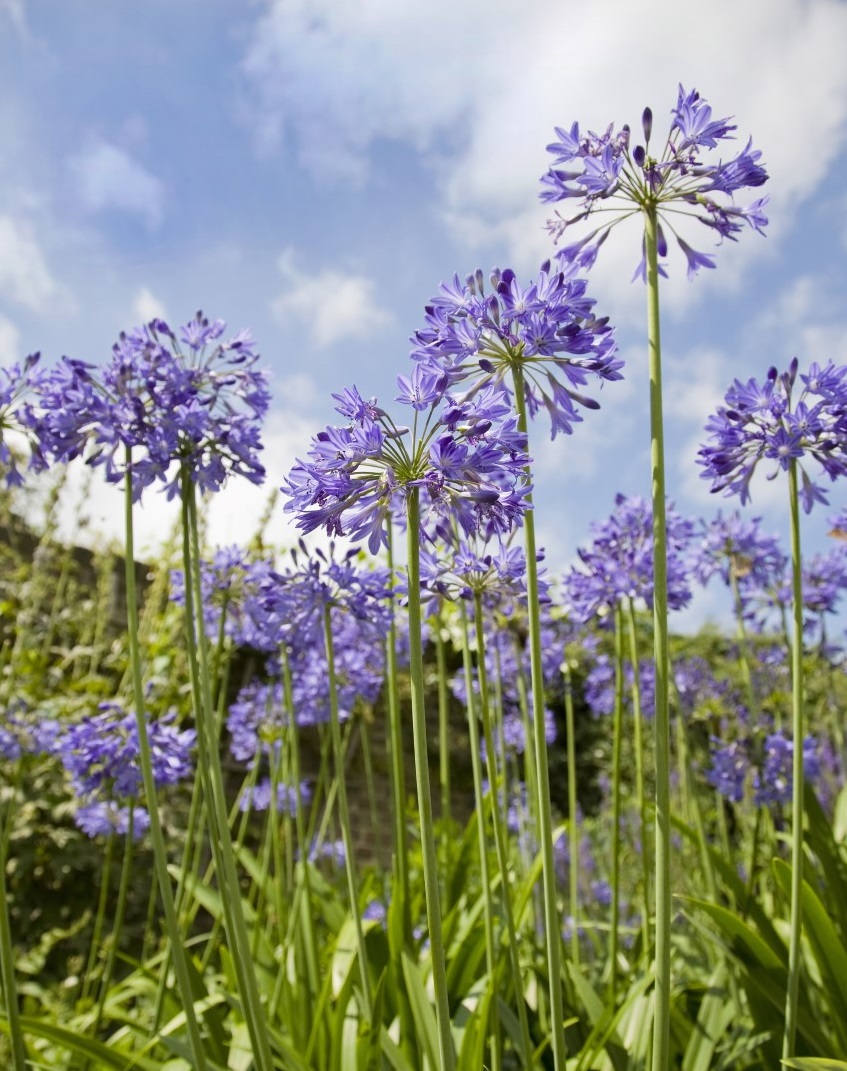
Agapanthus are now available in sizes from dwarf to giant. Photo - photolibrary.com
I have always loved a trip to the beach and that first dazzling glimpse of ocean. My sing-song chorus from the car has been the same now for 36 years,
“ I see the sea and the seas sees me!” The horizon of blue lifts my spirits and its cool sparkle offers relief from the summer heat. The same goes
for blue and white flowers in my garden, especially the agapanthus. They remind me of long summer days, Christmas and a cool iceblock after a day at
the beach.
Cool blues
Blue is a cooling colour and in the garden it provides a restful serene atmosphere. Limiting colours in the garden is an easy way to create a vibrant and
fresh look. The combination of blue and green is well complemented by lemon, white, orange and silver.
Strangely there are only a handful of blue flowers. Plumbago is one, best suited to use as a medium-sized hedge to 2m. ‘Royal Cape’ has a more intense
tone and is a superior plant to the common sky-blue plumbago. Plumbago is a rambler and its suckering habit helps in establishing it as a hedge, but
to keep it under control, pull off any suckers that are out of place. Prune plumbago very hard in late autumn, after flowering, or it will get out
of control. Fan flower (Scaveola) and Leschenaultia are two blue native groundcovers that grow like mounded carpets and can be planted around clumps
of agapanthus. They all enjoy similar conditions - a hot sunny position with limited water.
A dusting of white, lemon, orange or silver to the blue and green palette will help the blues shine. Consider accents of lemon pokers, lemon flower carpet
roses, white rock rose (Cistus ‘Mrs Bennetts White’), milk spurge (Euphorbia spp) and carpets of white moonflower (Convovulus cnenorum).
Aggies in the garden
Blue and white agapanthus make an excellent evergreen border to paths and driveways in areas exposed to the hottest afternoon sun. I use the smaller dwarf
forms to edge garden beds and use the giant forms as large clumps of colour in my perennial borders. En masse they look like the gentle waves of the
ocean. Another classic use is as entire row of blue out the front of a white picket fence. The only danger is schoolkids snapping the heads off as
they walk by! Agapanthus can also be easily grown in large pots for the balcony, courtyard or veranda. Keep in mind that they prefer cramped root conditions
so should be potted up gradually rather than swamped by huge amounts of wet soil in a large pot.
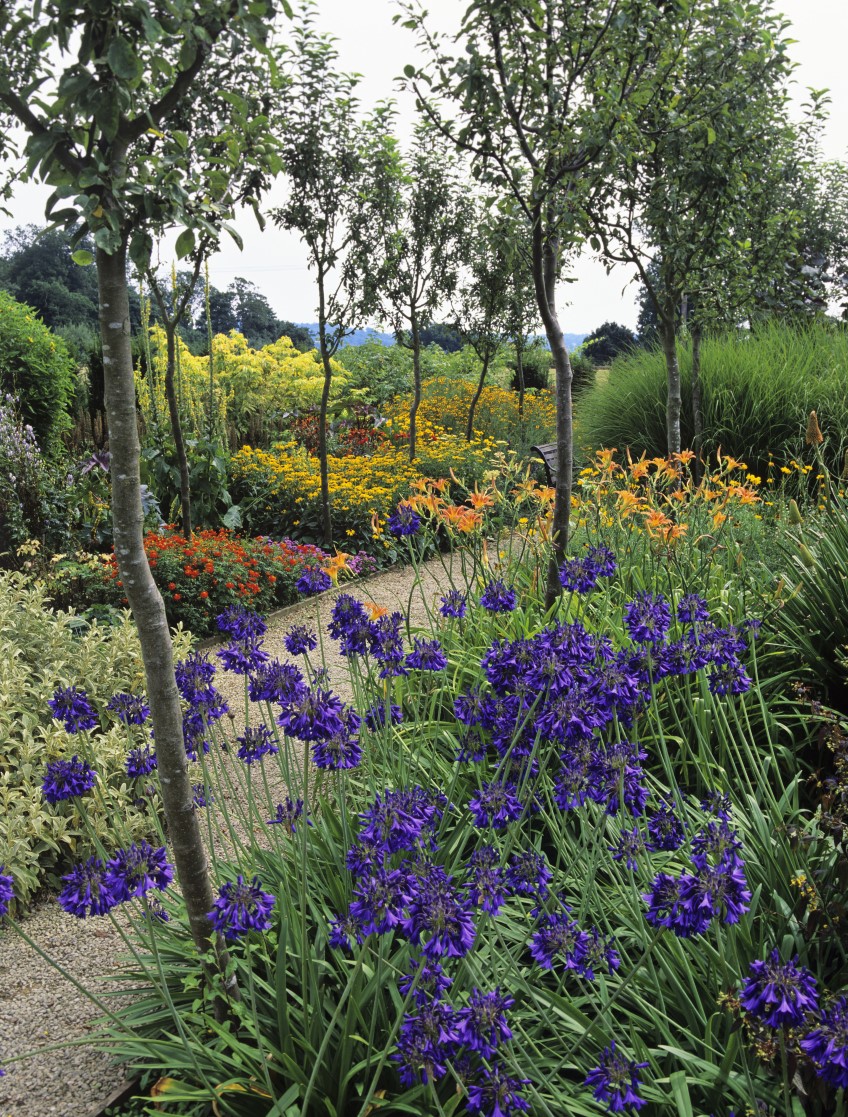
A border of blue is perfect along pathways. Photo - photolibrary.com
Care
Happy in poor soils and full sun, no plant matches this one for indestructibility. The thick fleshy roots allow the plant to store its water, energy and
food, making it an extraordinarily drought-resilient plant for pool soils. While it does well with neglect, a little care, water and fertiliser will
greatly improve agapanthus flower production.
Although agapanthus are the ultimate easy-case plant, you should take care to remove the finished flower heads. These are quick to seed and can often become
a menace in suburbs adjoining bushland areas. In fact the weedlike tendencies of this plant are often debated in the world of horticulture and in some
parts of Victoria it is declared a weed. Some of the new hybrids are sterile so there is no weedy danger, but just to be on the safe side, simply remove
the unripe seed head when the flowers are finished.
One of the myths about agapanthus is that they change colour from blue to white or vica versa. They do not actually change colour but as the seeds germinate
under the mother plant, seedling variation means these new plants could be white or blue! Once again, simply pruning the finished heads will stop the
seed forming and ensure your aggies stay the colour you planted.
Make more plants by root division in autumn and winter. To keep agapanthus in prime flowering form, lift and divide the clumps every four or five years,
in autumn. Feed in spring with an organic feed to nourish the developing flower buds.
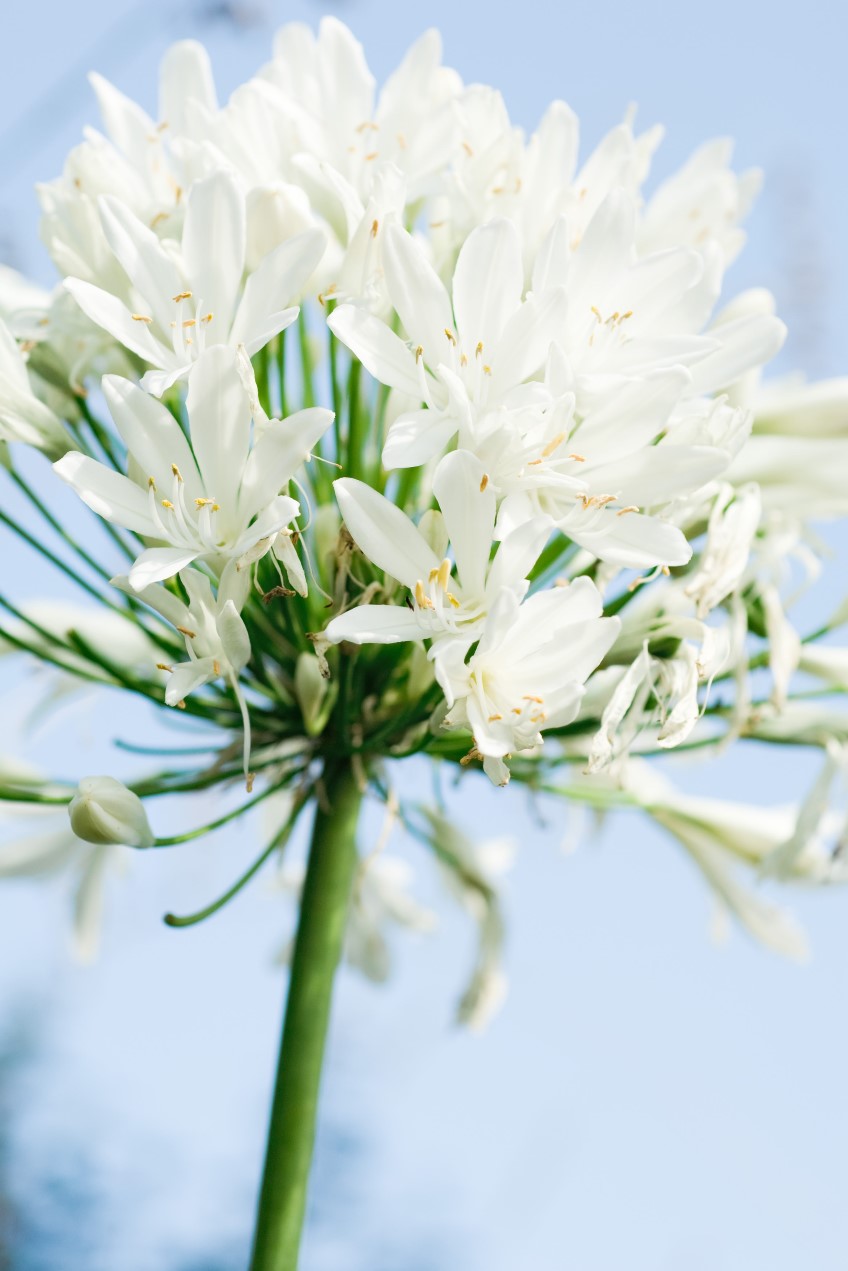
Deep-blue, sky-blue and white forms of agapanthus are available, so you can choose exactly the colour and height you need. Photo - photolibrary.com
Plant notes: Agapanthus
‘Queen Mum’
This new giant variety has mid-green leaves to 1m, and flower spikes towering 2m high. White flowers are striped with the palest blue.
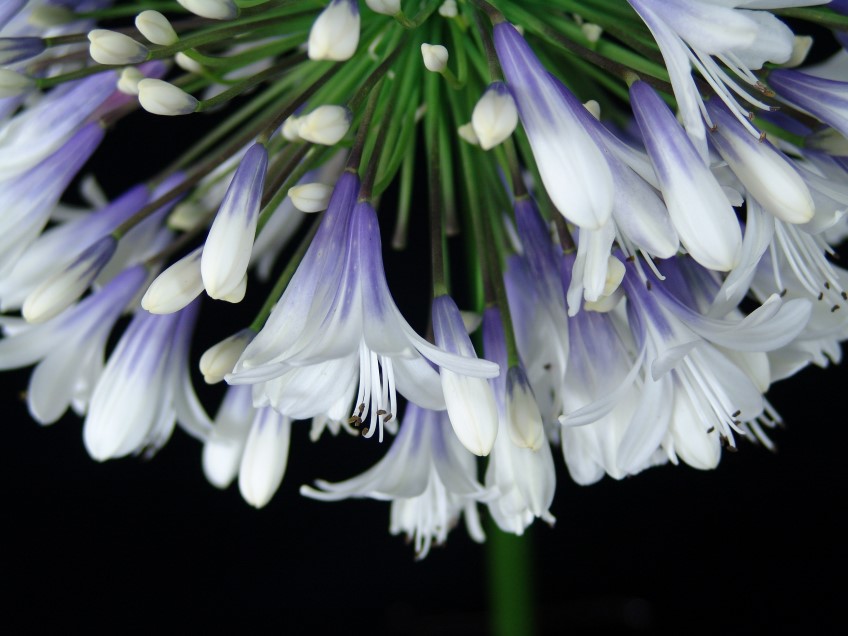
Queen Mum
‘Black Pantha’
Purple flower buds and dramatic purple-verging-on-black flowers look striking against the green foil of the foliage.
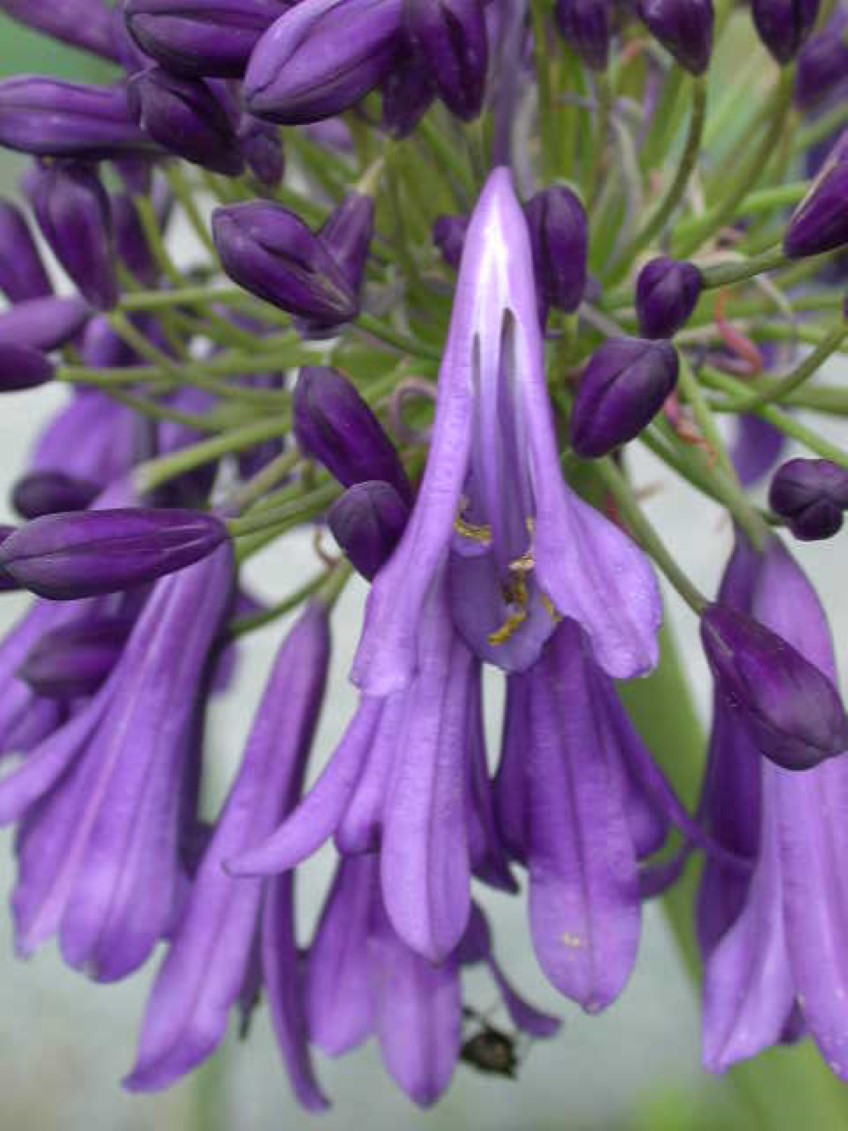
Black Pantha
‘Purple Cloud’
A giant form, in amethyst purple. Grey-green foliage gets to 1m and the flowers reach to 2m with a diameter of 30cm in diameter. Truly stunning and well
worth the hunt.
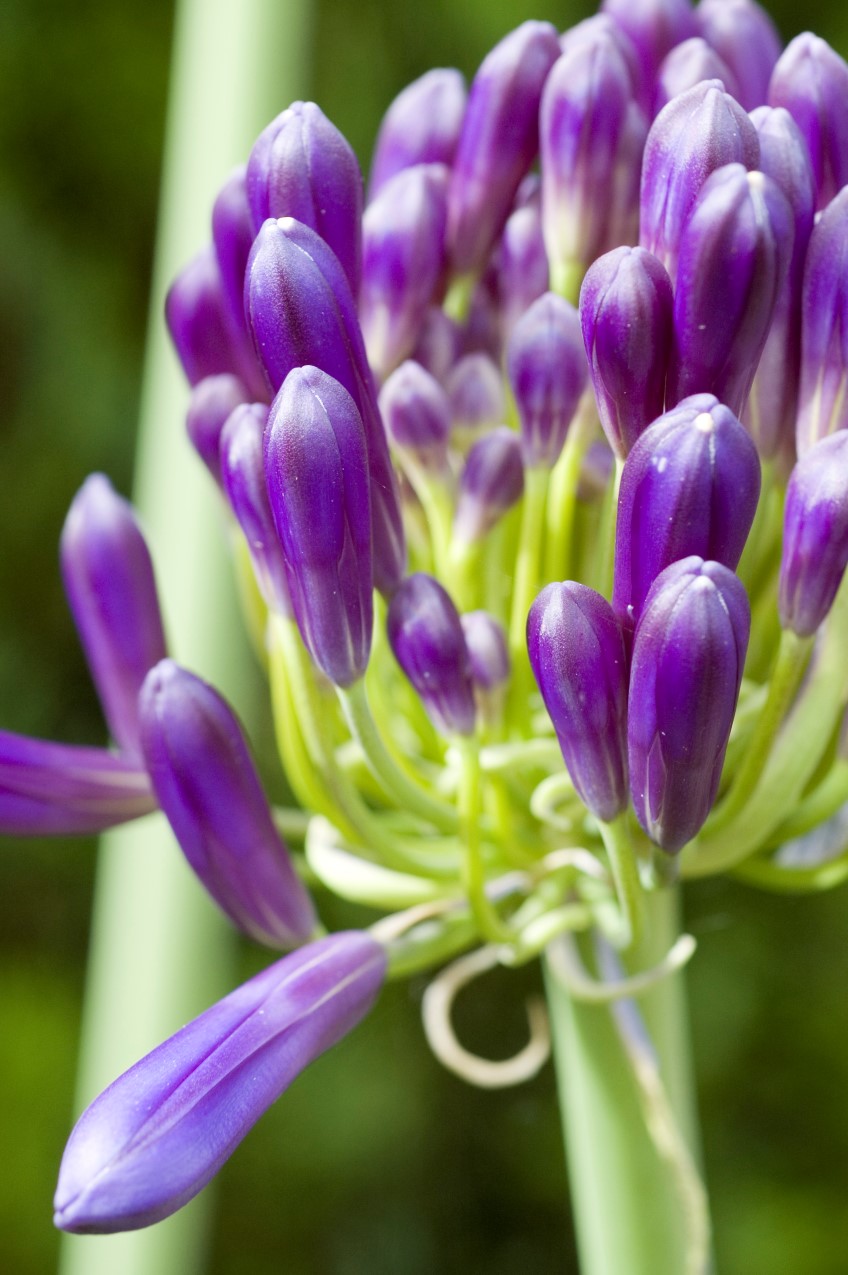
Purple Cloud